Galaxy S21 Plus vs. ROG Phone 5: Traditional flagship or gaming flagship?
Is it time for mobile gamers to pick a dedicated gaming phone?

Gaming phones as a category have largely died off with many users simply turning to flagships like the Galaxy S21 Plus instead. But with the launch of the ROG Phone 5, it is worth revisiting whether \a gaming phone offers something more than a traditional flagship.
Obviously, if you have no interest in gaming or your mobile gaming is limited to Candy Crush, the ROG Phone 5 is not for you. However, for the millions of fans of more intensive mobile gaming experiences like Fortnite, COD Mobile, Genshin Impact or the game streaming services that are available for Android, the ROG Phone 5 is definitely worth a second look.
- Best smartphones in 2021
- iPhone 12 Pro vs. iPhone 12 Pro Max: Which should you buy?
- Best cell phone deals in March 2021
We’ll compare the Galaxy S21 Plus to the ROG Phone 5 across seven different categories to show you some of the advantages each offers over the other and help you decide which one is the best choice for you.
| Row 0 - Cell 0 | Galaxy S21 Plus | ROG Phone 5 |
| Display | 6.7-inch AMOLED 2X FHD+ 120Hz | 6.8-inch AMOLED FHD+ 144Hz |
| CPU | Qualcomm Snapdragon 888 | Qualcomm Snapdragon 888 |
| RAM | 8GB | 16GB |
| Storage | 128GB | 256GB |
| Rear cameras | 12MP f/1.8 (Wide-angle), 12MP f/2.2 (Ultra-wide), 64MP f/2.0 (Telephoto) | 64MP f/1.8 (Wide-angle), 13MP f/2.4 (Ultra-wide), 5MP f/2.0 (Macro) |
| Front camera | 10MP f/2.2 (Wide-angle) | 24MP f/2.5 (Wide-angle) |
| Battery size | 4800 mAh | 6000 mAh |
| Water resistance | Yes, IP68 | No |
| Colors | Phantom Black, Phantom Silver, Phantom Violet, Phantom Pink, Phantom Gold and Phantom Red | Phantom Black and Storm White |
| Dimensions | 6.4 x 3 x 0.31 inches | 6.8 x 3 x 0.36 inches |
| Weight | 7.1 ounces | 8.4 ounces |
Galaxy S21 Plus vs. ROG Phone 5: Price and value
The Galaxy S21 Plus starts at $999 for the base model with 128GB of storage, while bumping up to 256GB takes you to $1,049 with otherwise the same components.
The ROG Phone 5 isn’t actually shipping yet with only international availability announced, so U.S. pricing is harder to parse. The base ROG Phone 5 comes with 8GB of RAM and 128GB of storage for €799. But you can jump up to 12GB of RAM and 256GB of storage for €899 or max out at 16GB of RAM with 256GB of storage for €999.
At the moment, this puts the phones on roughly equal footing when it comes to pricing. The current exchange rate makes the base model ROG Phone 5 about $953, so it's slightly cheaper for the same amount of RAM and storage.
The step-up for each phone is the sweet spot in terms of value. On the ROG Phone 5, you get a nice 4GB boost in RAM to go with the doubled storage for €100 extra. And doubled the storage is well worth the $50 price jump in the long term for the Galaxy S21 Plus.
Sign up to receive The Snapshot, a free special dispatch from Laptop Mag, in your inbox.
Winner: Draw
Galaxy S21 Plus vs. ROG Phone 5: Design
The Galaxy S21 Plus design doesn’t exactly grab your attention unless you opt for one of its bolder color options. But the new “Contour Cut Camera housing” is an improvement over the previous rear camera array and offers a bit of unique flair.
Around the front, you have Samsung’s flat Infinity-O display with minimal bezels and a small-centered hole-punch front-facing camera.
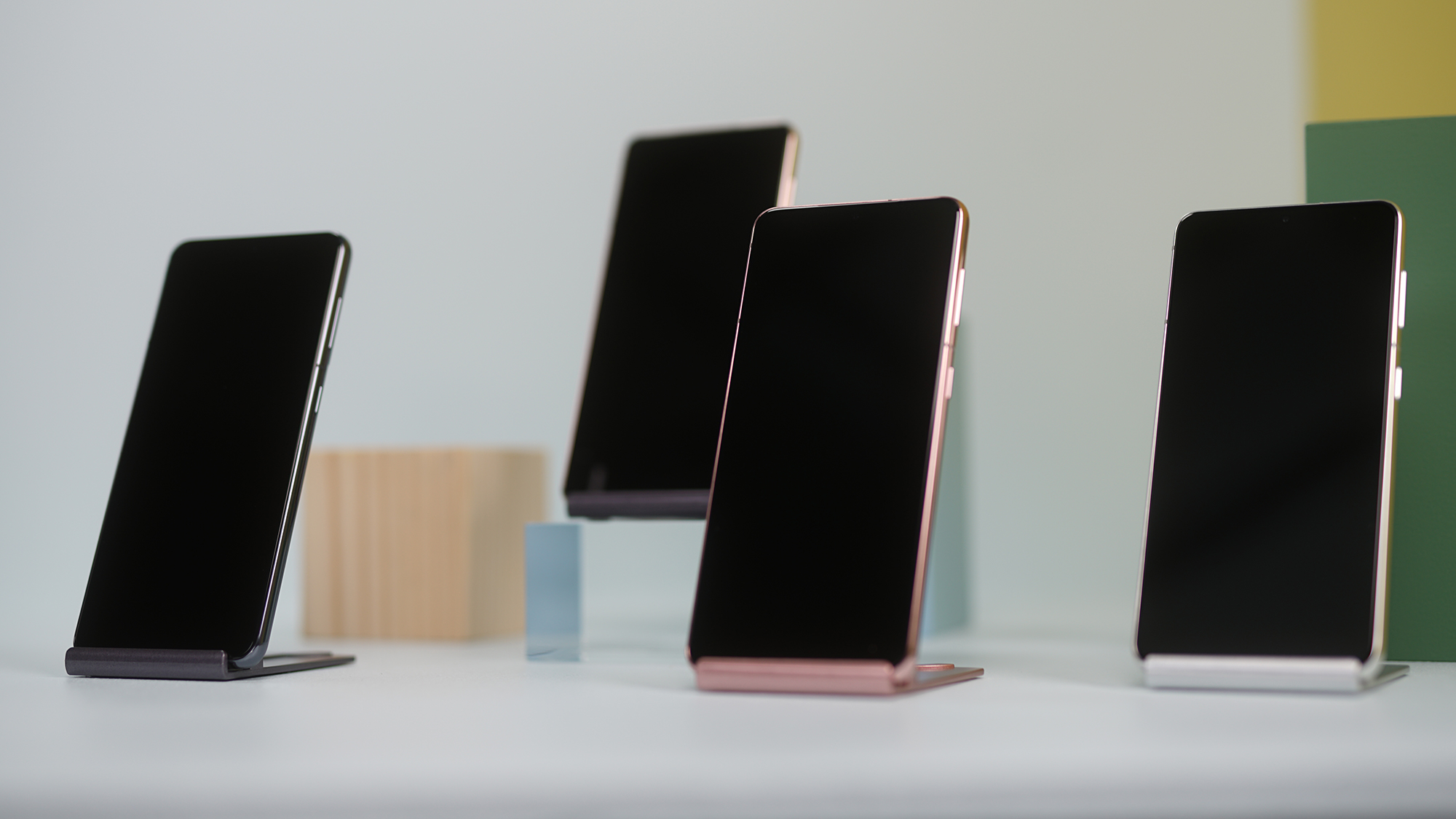
Despite the fact that the drop tests didn’t go great for it, durability is a point in favor of the Galaxy S21 Plus. The phone’s IP68 water resistance allows it to hold up to splashes and even up to 20 minutes submerged in water.
The ROG Phone 5, by comparison, embraces its position as a gaming phone fully. he look won’t be for everyone, but it is a more interesting design than most phones on the market, including the Galaxy S21 Plus.
The back of the ROG Phone 5 will be familiar to any ROG laptop fans, from its angular camera array to its shifting subtle patterns. And to eliminate any last sliver of doubt regarding what kind of phone this is, the ROG dot-matrix logo is backed with RGB lighting.
Taking a spin around the device and you get some additional splashes of color with the SIM tray cover and power button both a metallic blue on the Storm White unit or red on the Phantom Black model. The front of the ROG Phone 5, on the other hand, feels like a bit of a throwback. It has relatively large top and bottom bezels in order to avoid having a hole-punch or notch that interferes with the screen.
Additional points go to Asus for the AirTrigger 5 sensors on the back and edges of the ROG Phone 5, which allow you to map on-screen buttons to areas of the phone. It’s a very clever touch and can be a serious advantage for your mobile gaming.
Winner: ROG Phone 5
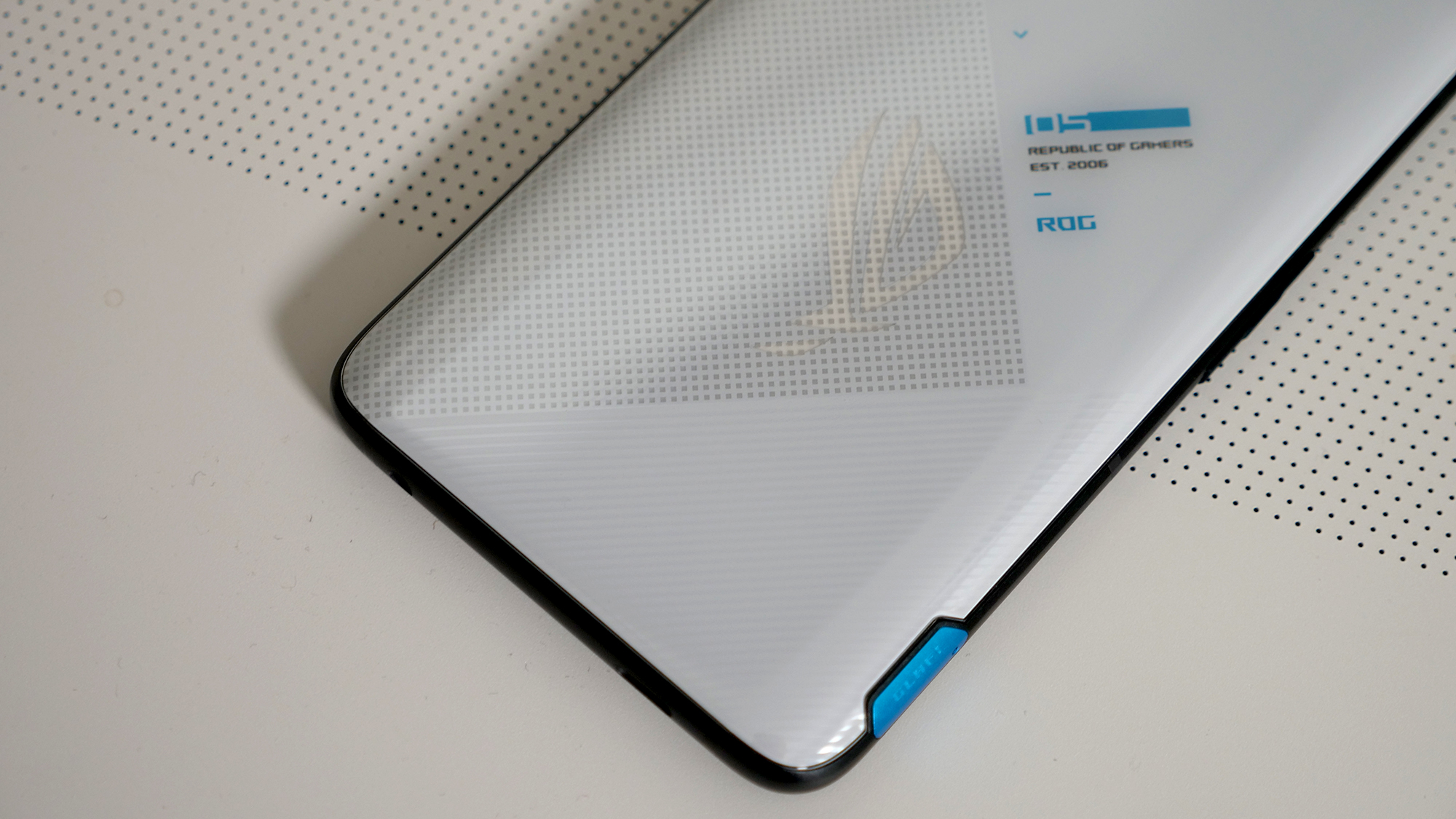
Galaxy S21 Plus vs. ROG Phone 5: Display
This is where things get a little interesting; both phones rely on Samsung displays. However, they aren’t identical. The ROG Phone 5 is pushing the refresh rate arms race forward with a 144Hz panel, while the Samsung Galaxy S21 Plus continues to refine the adaptive refresh rate first seen on the Galaxy Note 20 Ultra.
The Samsung Galaxy S21 Plus’ AMOLED 2X display is slightly smaller at 6.7-inches and tops out at a 120Hz refresh rate, but it can scale down to 48Hz depending on the content on screen.
The ROG Phone 5 is also AMOLED and gets a larger 6.8-inch display with a faster 144Hz refresh rate. The ROG Phone 5 can shift its refresh rate down to 120 or 60Hz, but is much less flexible there.
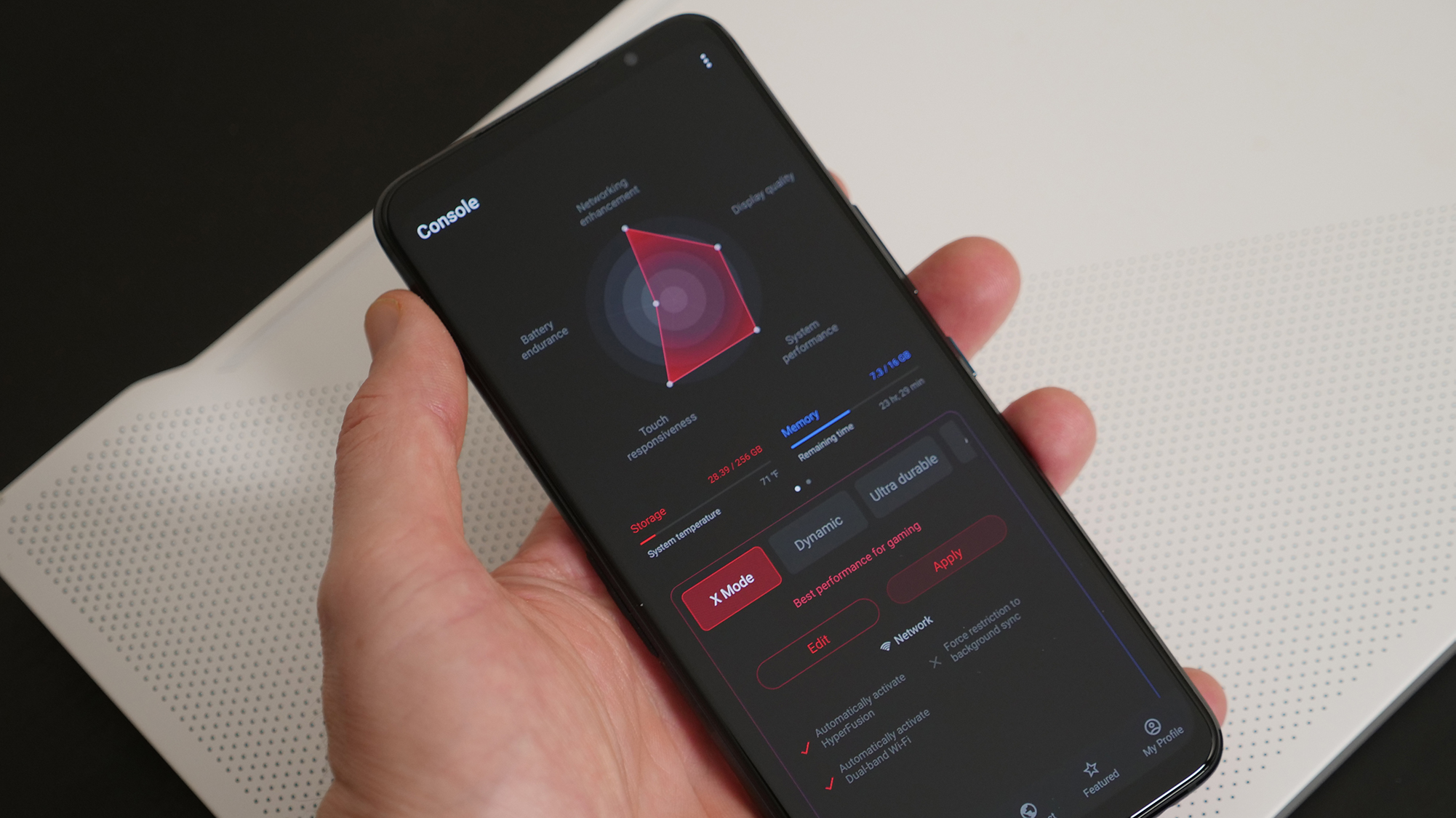
Turning to our benchmarks for the two phones, the Galaxy S21 Plus starts to pull away a bit more with an impressive DCI-P3 color gamut score of 150.4%. Compare that to the 127.6% for the ROG Phone 5 with the phones in their more vibrant settings, and Samsung wins. In their toned-down settings, the Galaxy S21 Plus falls behind considerably at 73.5% to the ROG Phone 5’s 112.8%.
However, there’s an important second component there. In their more vibrant settings, the color accuracy of both phones is a less than stellar Delta-E of 0.31 (lower is better), but tuned to their more natural states, the Galaxy S21 Plus hits a 0.18, one of the best results we’ve seen on a smartphone, while the ROG Phone 5 drops to a 0.29.
The ROG Phone 5 and its 144Hz display are still impressive, but the difference between 120 and 144Hz isn’t that significant. By the rest of the metrics, the Galaxy S21 Plus display is superior.
Winner: Galaxy S21 Plus
Galaxy S21 Plus vs. ROG Phone 5: Battery Life and charging
If you read the specs table up at the top, you’ll know the Galaxy S21 Plus has a 4,800 mAh battery compared to the 6,000 mAh battery in the ROG Phone 5. And if you think you can guess how that’s going to go in actual testing, you would be absolutely right.
Our testing involves the phones constantly browsing the web over a cellular connection with the display set at 150 nits of brightness.
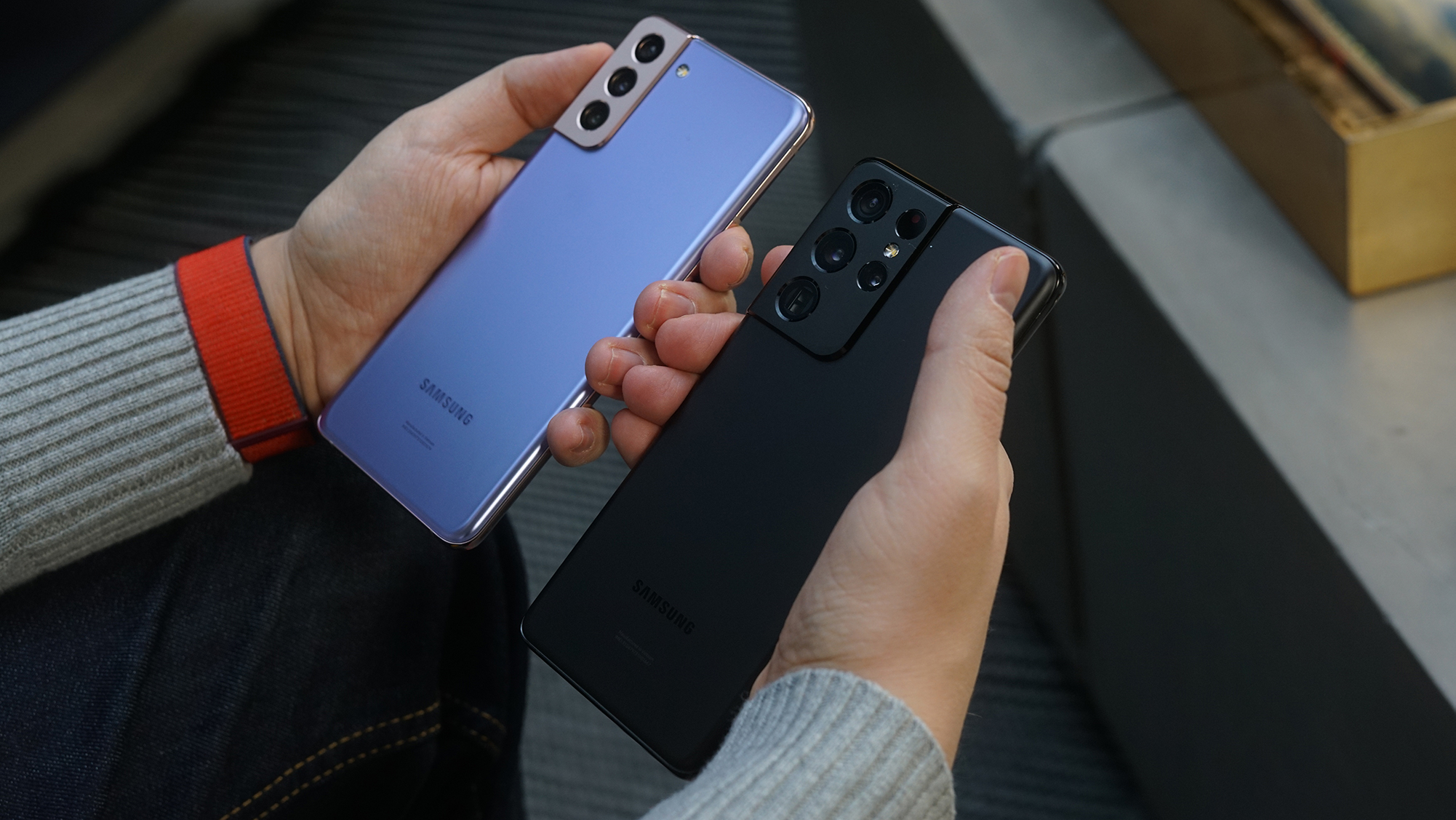
We’re going to first look at both phones locked at a 60Hz refresh rate, or the best-case scenario for them. The Galaxy S21 Plus on T-Mobile managed to last 9 hours and 54 minutes under these conditions, but the ROG Phone 5 on the same network bested that by nearly four hours at 13 hours and 38 minutes.
We tried giving the Galaxy S21 Plus an assist by using its adaptive display mode, which shifts from 120Hz down to 48Hz against the fixed 120Hz setting for the ROG Phone 5. However, the latter still comes out solidly ahead at 10 hours and 59 minutes to 9 hours and 41 minutes.
And when we address charging, the ROG Phone 5 has an even bigger advantage thanks to its support of 65W fast charging that can get it 77% charged in just 30 minutes and yes, that charger comes in the box. The Galaxy S21 Plus tops out at 25W fast charging and you have to buy the charger yourself.
Winner: ROG Phone 5
Galaxy S21 Plus vs. ROG Phone 5: Performance
While the Galaxy S21 Plus and the ROG Phone 5 both share the same Qualcomm Snapdragon 888 processor, the ROG Phone 5 includes up to 16GB of RAM. Asus is focused almost exclusively on delivering the most speed possible in this phone and that shows in our tests.
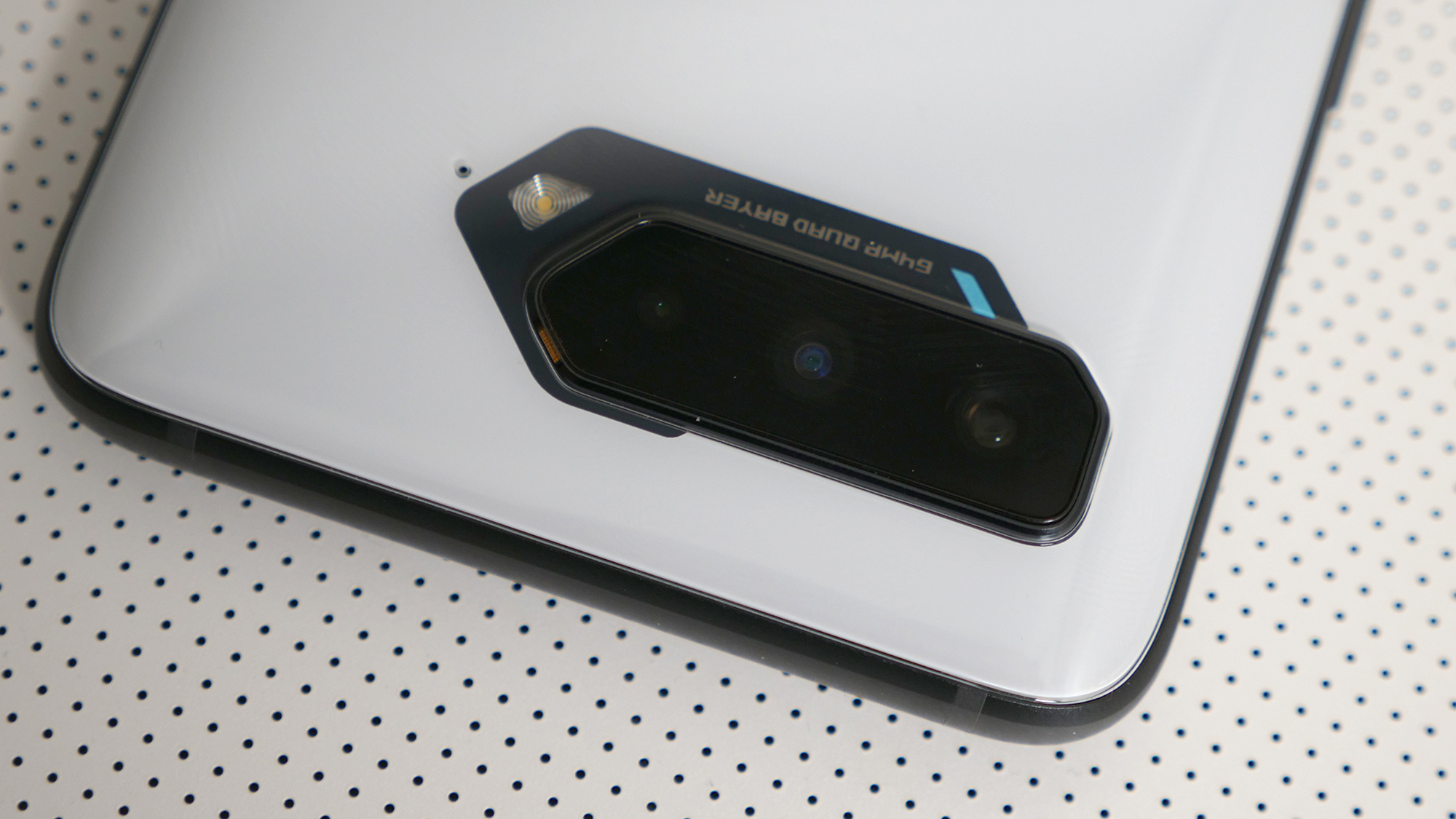
The ROG Phone 5 has claimed the top spot (for an Android phone) in Geekbench 5 multi-core testing at 3,705 compared to 3,300 for the Galaxy S21 Plus. Our Adobe Rush test, which involves converting a 4K video to 1080p, was closer, with the ROG Phone 5 finishing in 55 seconds to 1 minute even for the Galaxy S21 Plus.
Finally, in the 3DMark Wild Life Unlimited graphics test, the ROG Phone 5 just eked out a win with 34.6 frames per second to 33.4 frames per second with the Galaxy S21 Plus.
To be clear, neither phone is going to balk at any game or task that you will throw at it, but there’s no question that the ROG Phone 5 is the more powerful phone.
Winner: ROG Phone 5
Galaxy S21 Plus vs. ROG Phone 5: Cameras
The Galaxy S21 Plus gets its revenge here. The Galaxy S21 Plus features a triple camera array on the back with a 12MP f/1.8 wide-angle, a 12MP f/2.2 ultra-wide and a 64MP f/2.0 telephoto with 3x hybrid zoom/30x digital.
This hardware gives you an outstanding zoom range to ensure you can always capture the shot you want. And Samsung finally seems to have gotten a handle on computational photography this year, doing a much better job of rendering photos that are natural while still enhancing details.

The ROG Phone 5 offers a much better camera experience than the company’s previous ROG Phones with a triple camera array comprised of a 64MP f/1.8 wide-angle, a 13MP f/2.4 ultra-wide and a 5MP f/2.0 macro. For most users, the macro will go completely unused and the other two sensors, while perfectly adequate, aren’t remotely in the same class as the Galaxy S21 Plus.
Starting with that hardware deficit, the ROG Phone 5 then must contend with Samsung’s newfound computational photography prowess and it simply isn’t a contest.
If you value mobile photography, this may clinch the entire decision for you. While the ROG Phone 5 is not bad, by any means, it does not remotely compare to the photo or video quality of the Galaxy S21 Plus.
Winner: Galaxy S21 Plus
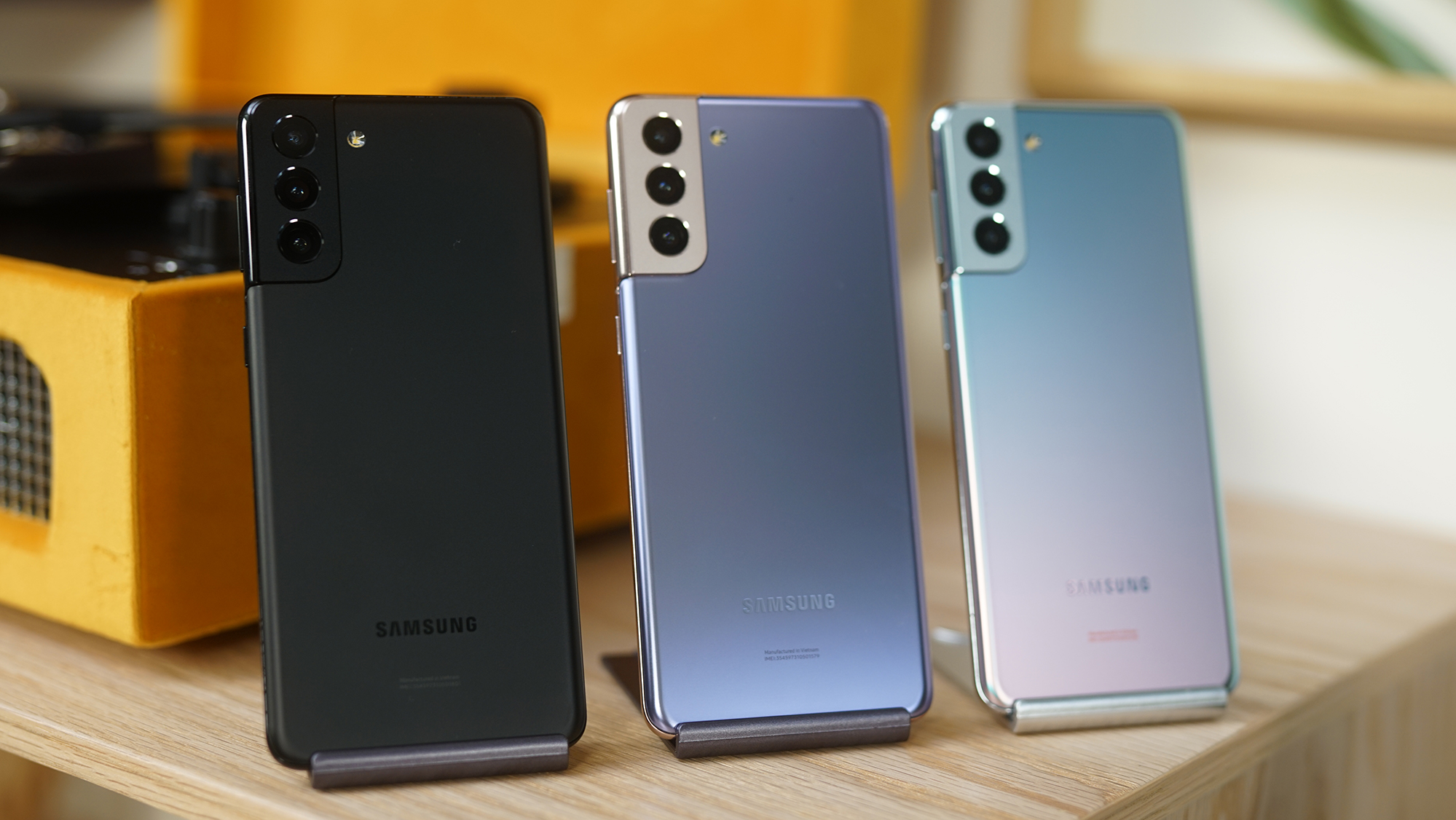
Outlook
I closed the last section with this advice, but if mobile photography or videography is your top priority, this competition is over; pick up a Galaxy S21 Plus or Galaxy S21 Ultra and call it a day.
However, if a large portion of your time on your phone is spent gaming, the ROG Phone 5 is not to be dismissed. Not only does it offer a performance advantage over the Galaxy S21 Plus, but its gaming-focused hardware and software touches make a meaningful difference to your mobile gaming experience. The AirTrigger 5 sensors are a literal game-changer, freeing you from having to block multiple sections of the screen with your fingers as you play. The Armory Crate software similarly allows you to give your entire system a performance boost or you can create custom device settings for specific games.
The battery life on the ROG Phone 5 is perhaps the only other truly significant differentiator between the two as it has the best battery life we’ve seen on a flagship phone along with blistering fast charging.
There’s no question that the Galaxy S21 Plus is going to be the far more popular phone when it comes to sales and that’s not the wrong choice, in fact, the entire Galaxy S21 lineup is excellent. But for mobile gamers, the ROG Phone 5 belongs in the conversation as an unmatched gaming phone and a solid all-around phone.
Sean Riley has been covering tech professionally for over a decade now. Most of that time was as a freelancer covering varied topics including phones, wearables, tablets, smart home devices, laptops, AR, VR, mobile payments, fintech, and more. Sean is the resident mobile expert at Laptop Mag, specializing in phones and wearables, you'll find plenty of news, reviews, how-to, and opinion pieces on these subjects from him here. But Laptop Mag has also proven a perfect fit for that broad range of interests with reviews and news on the latest laptops, VR games, and computer accessories along with coverage on everything from NFTs to cybersecurity and more.

